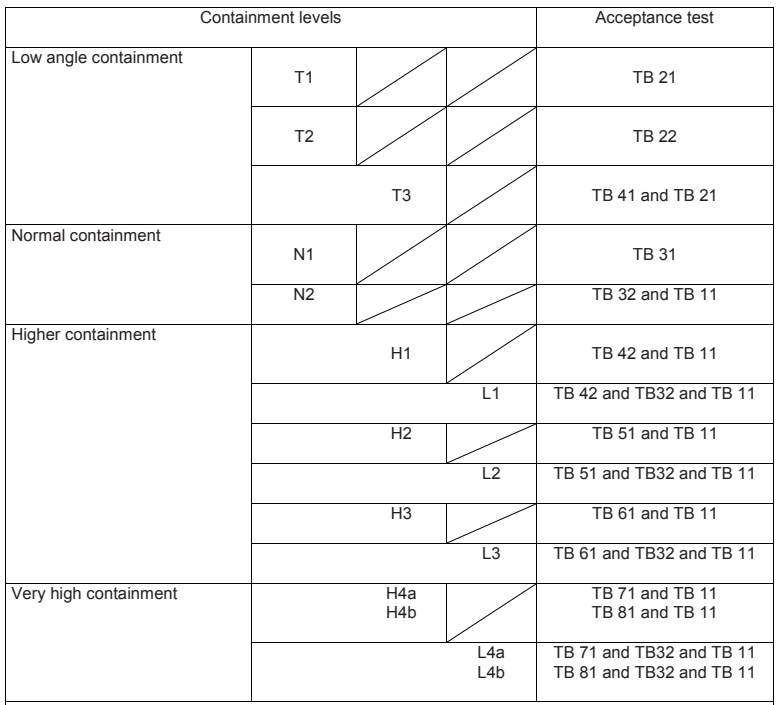BS EN 1317-1:2010 was approved by CEN on 29 April 2010.
In order to improve and maintain highway safety, the design of safer roads requires, on certain sections of road and at particular locations, the installation of road restraint systems. These road guardrail systems are designated to redirect errant vehicles with a specified performance level and can provide guidance for pedestrians or other road users.
This European Standard is a revision of EN 1317-1:1998. The standard identifies test methods and impact test acceptance criteria that the products for road restraint systems need to meet to demonstrate compliance with the requirements, given in EN 1317-5 and/or prEN 1317-6. The design specification, for road guardrail systems entered in the test report, identify important functional site conditions in respect of the test installation.
1. Performance classes
Safety barriers including vehicle parapets shall conform to the requirements of Containment levels, Impact severity and Deformation of the restraint system when tested in accordance with impact test criteria defined in Table as following.
Test Impact speed(km/h) Impact angle° Total mass(kg) Type of vehicle
TB11 100 20 900 Car
TB21 80 8 1300 Car
TB22 80 15 1300 Car
TB31 80 20 1500 Car
TB32 110 20 1500 Car
TB41 70 8 10000 Rigid HGV
TB42 70 15 10000 Rigid HGV
TB51 70 20 13000 Bus
TB61 80 20 16000 Rigid HGV
TB71 65 20 30000 Rigid HGV
TB81 65 20 38000 Articulated HGV
2.Containment levels
The containment levels of safety barriers including vehicle parapets shall conform to the requirements of Table follows when tested in accordance with the vehicle impact test criteria defined in Performance classes .

NOTE 1 Low angle containment levels are intended to be used only for temporary safety barriers. Temporary safety barriers can also be tested for higher levels of containment.
NOTE 2 A successfully tested barrier at a given containment level should be considered as having met the containment requirements of any lower level, except that N1 and N2 do not include T3, H-Levels do not include L-Levels and that H1, ..., H4b do not include N2.
NOTE 3 Because testing and development for very high containment safety barriers in different countries has taken place using significantly different types of heavy vehicles, both tests TB 71 and TB 81 are included in the standard at present. The two containment levels H4a and H4b should not be regarded as equivalent and no
hierarchy is given between them. The same holds for the two containment levels L4a and L4b.
NOTE 4 The performance of Containment Classes L is enhanced in respect to the corresponding H classes by the addition of Test TB 32.
The evaluation of a vehicle restraint system within the range of containment levels T3, N2, H1, H2, H3, H4a, H4b, L1, L2, L3, L4a and L4b shall require the carrying out of different tests:
a) A test according to the maximum level of containment for that particular system;
b) Test(s) using cars in order to verify that satisfactory containment of the maximum level is also compatible with safety for a range of cars.
3. Impact severity
The evaluation of vehicle occupant impact severity assessment indices ASI and THIV shall be carried out for cars. For cars ASI and THIV shall conform to the requirements of Table. These indices are defined in EN 1317-1:2010. As a function of the value of the ASI and THIV indices, three impact severity classes A, B and C are defined in
Table . Impact severity level A affords a greater level of safety for the occupant of an errant car than level B, and level B greater than level C. Test measures, appropriately adjusted in accordance with EN 1317-1:2010, 6.3, shall be directly compared to the values in Table .

EN1317 standard reserves the highway guardrail Containment levels: H1W1,H1W2,H1W3,H1W4,H2W1,H2W2,H2W3,H2W4,H2W5,H3W3,H3W4,H4BW3,H4AW4,etc.
In the following technical analysis, we will explain the design plans for each of these highway guardrail grades one by one.